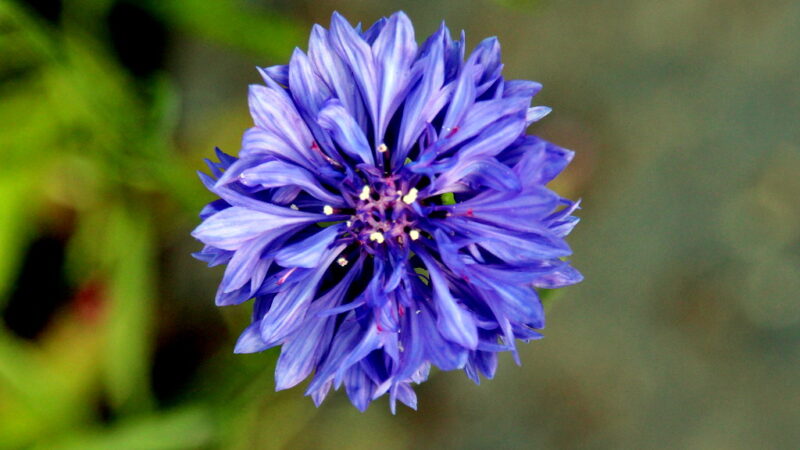Watering and fertilizing the cornflower

Providing the appropriate balance of water and nutrients is fundamental to cultivating healthy, vibrant cornflowers. These plants are known for their resilience and drought tolerance once established, but their performance is significantly enhanced with mindful attention to their hydration and nutritional needs. Understanding when and how to water, coupled with a conservative approach to fertilization, will prevent common problems and promote a prolific display of their iconic blue flowers. A well-managed watering and feeding regimen supports the plant throughout its rapid annual life cycle, from germination to seed production.
In the early stages of growth, from germination through to the establishment of young seedlings, consistent moisture is absolutely critical. The soil should be kept evenly moist but never saturated, as waterlogged conditions can lead to damping-off disease and root rot. During this period, it is beneficial to water gently and frequently to ensure the shallow roots of the seedlings have constant access to hydration. Using a watering can with a fine rose or a mist setting on a hose is ideal to avoid dislodging the delicate young plants and eroding the soil around them.
Once the cornflower plants have become established and are showing signs of vigorous growth, their watering needs change. They develop a deeper root system that makes them considerably more tolerant of dry conditions. At this stage, a deep and infrequent watering schedule is more beneficial than frequent, shallow watering. This encourages the roots to grow deeper into the soil in search of moisture, which in turn makes the plants more resilient and self-sufficient during periods of low rainfall. The soil should be allowed to dry out partially between waterings.
The best indicator for when to water established cornflowers is the condition of the soil itself. A simple test is to insert a finger a few centimeters into the soil near the base of the plant. If the soil feels dry at this depth, it is time to provide a thorough soaking. It is always preferable to water the plants early in the morning. This allows any moisture on the foliage to evaporate during the day, reducing the risk of fungal diseases, which thrive on damp leaves overnight.
Optimal watering practices
Achieving optimal hydration for cornflowers involves more than just the frequency of watering; the method of application is equally important. The most effective technique is to deliver water directly to the base of the plant, targeting the root zone. This ensures that the water penetrates deep into the soil where it is needed most. Methods such as soaker hoses or drip irrigation systems are particularly efficient as they minimize water loss through evaporation and keep the foliage dry, which is a key factor in preventing diseases like powdery mildew and rust.
More articles on this topic
The volume of water provided during each session is also a crucial consideration. A light sprinkling on the soil surface is largely ineffective as it only moistens the top layer and does not reach the deeper roots. Instead, each watering should be a deep, thorough soaking that allows the moisture to penetrate at least 15 to 20 centimeters into the soil profile. This practice encourages the development of a robust and extensive root system, which is the foundation of a healthy and drought-resistant plant.
The type of soil in the garden significantly influences the watering schedule. Sandy soils, for example, drain very quickly and will require more frequent watering than heavy clay soils, which retain moisture for much longer periods. It is essential for gardeners to observe their specific soil conditions and adjust their watering practices accordingly. Amending the soil with organic matter like compost before planting can help to improve its water-holding capacity, creating a more balanced and forgiving growing medium.
During extended periods of extreme heat and drought, even established cornflowers will benefit from supplemental watering. Signs of water stress include wilting leaves and a general lack of vigor. If these signs are observed, it is important to provide a deep watering session as soon as possible, preferably during the cooler hours of the early morning. Consistent monitoring of both the plants and the prevailing weather conditions allows for a proactive and responsive approach to watering.
The role of soil and mulch
The soil itself is the primary reservoir of water for the plants, and its characteristics play a pivotal role in any watering strategy. An ideal soil for cornflowers is one that is well-draining yet capable of retaining sufficient moisture. Soils that are too compacted or heavy with clay can become waterlogged, starving the roots of oxygen. Conversely, overly sandy soils allow water to drain away too quickly, making it difficult for the plants to absorb what they need. Improving soil structure is a long-term investment in plant health.
More articles on this topic
The incorporation of organic matter is the most effective way to enhance soil structure for better water management. Materials such as compost, leaf mold, or well-rotted manure improve the texture of both clay and sandy soils. In clay soils, organic matter helps to create larger aggregates, improving drainage and aeration. In sandy soils, it acts like a sponge, increasing the soil’s ability to hold onto water and nutrients, making them available to the plant roots for a longer period.
Applying a layer of organic mulch to the soil surface around the cornflower plants is another highly effective water conservation technique. A 5- to 7-centimeter layer of mulch, such as straw, shredded bark, or grass clippings, acts as a barrier, reducing the rate of water evaporation from the soil surface. This keeps the soil cooler and moister for longer, significantly decreasing the need for frequent irrigation. Mulching also has the added benefit of suppressing weed growth, reducing competition for available water.
When applying mulch, it is important to leave a small gap directly around the stems of the cornflowers. Piling mulch up against the stems can trap excess moisture, which may lead to stem rot and other fungal issues. A properly applied layer of mulch not only conserves water but also contributes to soil health as it gradually breaks down, adding valuable organic content back into the soil. This holistic approach to soil management creates a resilient and water-efficient garden environment.
Fertilization requirements
Cornflowers are not heavy feeders and generally thrive in soil of average to low fertility. In fact, overly rich soil or excessive fertilization can be detrimental to the plants. Too much nitrogen, in particular, will encourage the growth of lush, dense foliage at the expense of flower production. This can result in tall, leafy plants that produce very few blooms, defeating the primary purpose for which they are grown. Therefore, a restrained and targeted approach to fertilization is essential for success.
For most garden soils, the nutrients provided by an initial amendment of compost at the time of planting are sufficient to support the cornflowers throughout their entire growing season. This single application of organic matter provides a slow and steady release of essential nutrients that aligns well with the plant’s modest requirements. If the soil is known to be particularly poor or depleted, this initial amendment becomes even more critical for establishing healthy plants.
If the plants appear to be struggling, with pale leaves or stunted growth despite adequate watering, a supplemental feeding may be considered. In such cases, a balanced liquid fertilizer, diluted to half-strength, can be applied once during the mid-season. It is important to choose a fertilizer that has a lower nitrogen content relative to its phosphorus and potassium levels. Phosphorus is particularly important for promoting robust root development and abundant flower production.
Chemical fertilizers should be used with caution, if at all. An over-application can easily burn the plant’s roots and disrupt the delicate balance of the soil’s microbial ecosystem. Organic options, such as compost tea or a liquid seaweed fertilizer, are generally safer and provide a broader range of micronutrients that benefit both the plant and the soil. Ultimately, the best approach is to focus on building healthy, fertile soil from the outset, which will minimize or eliminate the need for supplemental fertilization.
Nutrient deficiency and excess
Recognizing the signs of nutrient imbalances is a key skill for any gardener. In cornflowers, a nitrogen deficiency may manifest as a general yellowing of the leaves, particularly the older, lower ones, along with weak and stunted growth. While this is less common due to their low nutrient needs, it can occur in very poor, sandy soils. A light application of a balanced, nitrogen-containing fertilizer can typically correct this issue and restore the plant’s vigor.
Conversely, an excess of nitrogen is a more frequent problem, often caused by over-fertilizing or planting in soil that is too rich. The primary symptom of nitrogen excess is the profuse growth of dark green, soft foliage, accompanied by a noticeable lack of flower buds or blooms. The plant invests all its energy into vegetative growth rather than reproductive growth. To remedy this, one must cease all fertilization and ensure the plant is not receiving excess nitrogen from other sources, such as lawn fertilizer runoff.
Phosphorus deficiency, though rare, can also occur. It is often indicated by stunted growth and sometimes a purplish tinge to the leaves. Phosphorus is vital for energy transfer within the plant and plays a crucial role in flower and seed development. A fertilizer higher in phosphorus, such as a bone meal amendment or a specific “bloom booster” formula, can help to correct this imbalance. However, it is always wise to confirm with a soil test before adding specific nutrient amendments.
It is important to differentiate between nutrient deficiency symptoms and problems caused by other factors, such as improper watering, disease, or pests. Wilting, for example, is more often a sign of water stress than a nutrient issue. Careful observation and a process of elimination are required to make an accurate diagnosis. In general, for cornflowers, the principle of “less is more” is the safest and most effective guide when it comes to fertilization. Building healthy soil remains the best strategy for preventing nutrient-related problems.
Fotó forrása: Flickr / Szerző: yrjö jyske / Licence: CC BY 2.0



















